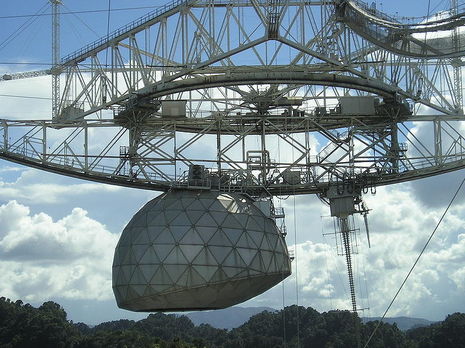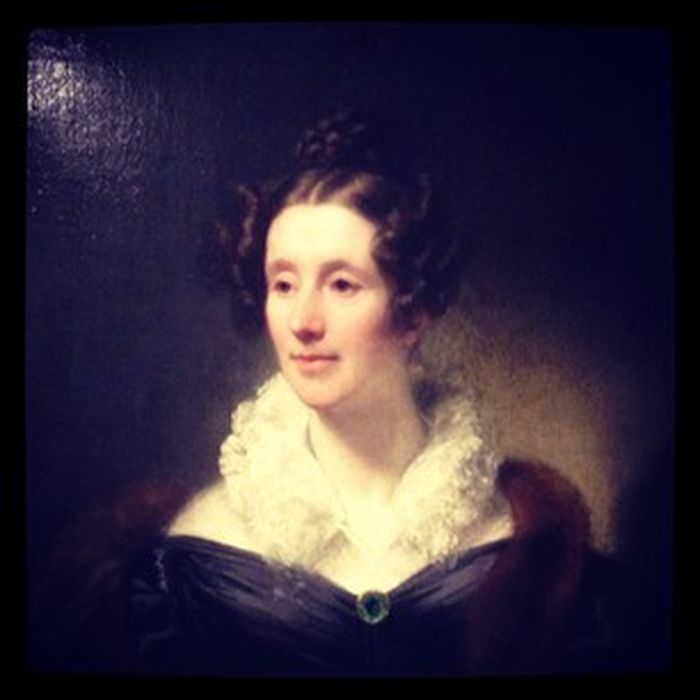A Love Letter to Arecibo
Following the recent collapse and closure of the Arecibo observatory, Jake Rose remembers its past contributions and why it is truly irreplaceable for the field of astrophysics

“Somewhere, something incredible is waiting to be known” - Carl Sagan
It’s hard not to sit in wonder at the sheer scale of the Arecibo Telescope; the main dish was over 300m in diameter – so big that the easiest way to make it was to put it in a naturally formed sinkhole. She was, until 2016, the biggest radio dish ever constructed. What she had in scale she matched in scientific discovery; Arecibo was at the core of radio astronomy since her construction in 1963. In the 50 years since, she has changed how we view everything, from our solar system to the cosmos’ largest structure – that’s why her collapse is so heartbreaking.
“Currently there is no proposed telescope that could match her capabilities, and maybe there never will be. For now, we have only one thing we can do. Look back with awe at what was discovered, and use it as guidance for the future.”
On December 1st 2020, the instrument platform's supporting cables broke, causing the 900 metric-tons worth of scientific instruments to fall over 100m into the dish, obliterating it. The gut-wrenching crash was captured by several videos, including by a drone that was inspecting one of the cables as it gave way. The day after the collapse the National Science Foundation (NSF), the organisation responsible for maintaining the telescope, released footage of the collapse onto their YouTube account.
But although its destruction is heartbreaking to the astronomy community (and lovers of Golden Eye), its failure wasn’t all that unexpected. For years it had a constant struggle to gain sufficient funding, with a Director even quitting in 2015 over the issue, and when two cable breaks in the space of 5 months threatened the stability of one of the support structures and significantly damaged the dish, the NSF decided it would be decommissioned. Arecibo, in her final show of grace, decided she would rather go out on her own terms.
For the foreseeable future radio astronomy is, inevitably, handicapped. Such a wide array or potential discoveries have been lost or at least slowed down. Currently there is no proposed telescope that could match her capabilities, and maybe there never will be. For now, we have only one thing we can do. Look back with awe at what was discovered, and use it as guidance for the future. One of her biggest contributions to astrophysics was the discovery of the first binary pulsar (a pulsar orbiting another star) in 1974. This pulsar was dubbed a new “space-laboratory” due to its extreme environment allowing for the testing of the theory of General Relativity (GR) – a simple and elegant description of gravity which links the geometry of space-time with density of matter. In recognition of this discovery, Hulse and Taylor were awarded the 1993 Nobel Prize in Physics. Since then, observations of the orbital decay have perfectly matched the predictions based on the energy loss via gravitational waves, providing a key confirmation of one of modern theoretical physics’ most accurate theories. Far from understanding the fundamental nature of the universe, Arecibo also gave us the first exoplanets (a planet outside of the solar system), of which it found 3 orbiting the pulsar PSR B1257+12 in 1992. A fundamental step in understanding how we are here and who else may be there, Arecibo laid the groundwork for the some 4000 now confirmed exoplanets discovered since then.
“A fundamental step in understanding how we are here and who else may be there, Arecibo laid the groundwork for the some 4000 now confirmed exoplanets discovered since then.”
Arecibo was no slouch in our solar system, either: one of her first major discoveries came in 1967 when astronomers used Arecibo’s huge transmitter (capable of outputting more than 1,000,000 Watts of radio waves – a toaster is about 1000 Watts) - to bounce a signal off Mercury, allowing them to recalculate it’s rotation rate. In the face of most of the scientific consensus at the time, they discovered it actually rotates once around its axis every 59 Earth days as opposed to the previously thought 88 earth days. This had fundamental importance to planetary dynamics, leading to incredible discoveries about how our solar system evolved under the Sun’s gravitational field.
Using one of her most unique features, a massive 430Mhz transmitter, she mapped the surface of the moon, revealing sub surface structures not visible in the optical regime. Although the scientific wealth of information which can be gleamed from this is immense, sometimes it’s good to just enjoy the pretty pictures.
Arecibo was a huge endeavour. She was a magnificent superstructure that survived hurricanes, decades of politics, budget cuts, and through it all gave us a wealth of knowledge about our world. Even beyond her death, we will have years worth of data to still be analysed for “more layers of the onion to be peeled back,” in the words of Feynman. Arecibo was a beacon of hope, a vision for what human ingenuity can do despite our social differences. She was irreplaceable for her scientific capabilities, and her loss will be mourned. Yet, over 50 years she has pulled back the fine tapestry, showing us things that were waiting to be known. Let us not regret her loss, but use her as an inspiration in our search for the many, many more interesting things to be known.
Thank you, Arecibo.
 News / Uni Scout and Guide Club affirms trans inclusion 12 December 2025
News / Uni Scout and Guide Club affirms trans inclusion 12 December 2025 News / Pembroke to convert listed office building into accom9 December 2025
News / Pembroke to convert listed office building into accom9 December 2025 Features / Searching for community in queer Cambridge10 December 2025
Features / Searching for community in queer Cambridge10 December 2025 News / Uni redundancy consultation ‘falls short of legal duties’, unions say6 December 2025
News / Uni redundancy consultation ‘falls short of legal duties’, unions say6 December 2025 News / Gov declares £31m bus investment for Cambridge8 December 2025
News / Gov declares £31m bus investment for Cambridge8 December 2025









